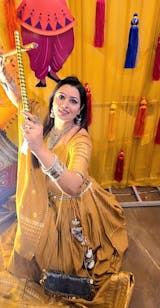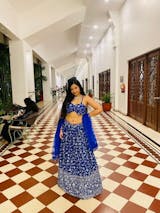Fashion, often seen as a reflection of cultural identity and historical heritage, transcends mere style and trends. It acts as a silent language that narrates stories of traditions, values, and the evolution of societies. The journey across different cultures in the realm of ethnic fashion unveils a rich tapestry of colours, textures, and designs, each deeply rooted in the regional influences and ethos of the people. This blog explores the diverse world of ethnic fashion, highlighting how regional cultures shape and influence traditional attire.
The Essence of Ethnic Fashion
Ethnic fashion is more than just clothing. It represents the commemoration of cultural ancestry and serves as evidence of the creative resourcefulness shown by individuals around the globe. Each garment of ethnic dress, whether it is the delicate needlework of Eastern Europe or the bright designs of African apparel, encapsulates a fragment of history and narrates the tale of its own culture. This fashion form is not static; it evolves with time while maintaining a solid connection with its roots.
Asia: A Melting Pot of Traditions
Asia, with its myriad cultures, offers a spectacular variety of traditional attire. In India, the saree and salwar kameez showcase intricate regional embroideries like Phulkari from Punjab or Kantha from Bengal. Similarly, the Kimono in Japan and the Hanbok in Korea are exemplary of the elegance and cultural significance embedded in Asian fashion. Each garment is a canvas where centuries-old traditions and modern influences coexist harmoniously.
African Elegance: Bold and Beautiful
African ethnic fashion stands out for its bold colours, geometric patterns, and symbolic motifs. Countries like Nigeria, Ghana, and South Africa, among others, present a kaleidoscope of fashion that is deeply intertwined with their cultural narratives. The use of local materials like Ankara and Kente in garments reflects a strong sense of identity and a celebration of African heritage.
The Richness of Middle Eastern Attire
The Middle East is renowned for its luxurious fabrics and embellishments. Traditional attire like the Abaya and Kaftan exudes elegance and modesty, often adorned with intricate beadwork and embroidery. These garments reflect the region's values and the evolving fashion sensibilities of its people.
European Ethnic Wear: A Blend of History and Art
Europe's ethnic fashion is a testament to its rich history and artistic heritage. From the Scottish kilt to the Russian Sarafan, European traditional attire is deeply influenced by historical events, regional climates, and artistic movements. These garments not only represent cultural identity but also tell stories of the past.
Latin American Vibrancy
Latin America’s ethnic fashion is as vibrant and diverse as its culture. Traditional attire like the Mexican Huipil and the Peruvian Poncho is imbued with indigenous patterns and colours, reflecting the rich cultural landscape of the region. These garments are not just clothing but a celebration of life and community.
The Global Influence
In today's interconnected world, ethnic fashion is not confined to its region of origin. It has become a global phenomenon, influencing mainstream fashion and being adapted by designers worldwide. This cross-cultural exchange has led to innovative fusions, bringing a piece of the world to our wardrobes.
Conclusion
Ethnic fashion is a beautiful expression of our diverse world, blending history, tradition, and modern style. At ZeelClothing, we celebrate this rich tapestry, offering a window into the vibrant cultures that shape our global fashion landscape. This journey through regional influences in ethnic attire reminds us of the unique stories and heritage each piece carries, connecting us all through the universal language of style and creativity.









